When cotton was king and slavery prevalent, Natchez, Mississippi was at its center. The land and the river for transport made plantation owners here enormous fortunes. In fact, before the civil war, Natchez was home to more millionaires per capita than any other American city.. and, of course, that wealth was impossible without slave labor.
The war that rightly freed the slaves, destroyed more than just cities, railroads, and plantation lands, it was a major disruption to the Southern economy whose agricultural exports of cotton, tobacco, and rice relied on free labor. It’s extremely difficult to have any empathy given their treatment of the slaves and more recently, some studies are emerging that suggest that despite many plantations being abandoned by destitute owners, that many of these white, wealthy families rebuilt much of their lost wealth in just one generation, and within two generations, most had recovered entirely.
One way to compare inequity in the US is to compare the wealth of those in the top 90% of wealth with those in the middle (median wealth). This is called the 90-50 rule. Today’s inequities are not great at a ratio of 12:1, but historians say that at the time of the Civil War, the ratio was 15:1 in the South and that was only counting white wealth. If the African American population is included in 1860, the ratio would have been 300:1!
Every year Natchez mansions, many restored for their historical significance, are opened to visitors for tours during what is called the “Spring Pilgrimage”. We tried to attend last spring, but had to abandon touring due to tornados threatening the area (storm runners post here). Some of the homes, like this one called “Longwood”, are open for tours year round.
Construction on this unique, 30,000 sq. ft., octagonal home was started just before the Civil War and thus, only 1 of its 6 floors was ever finished (just 9 of its planned 32 rooms). Despite this, one peek at its enormously elegant shell and you can imagine how stunning it would have been had it been finished. It was built with over 1 million bricks made on site and plans show it would have contained 26 fireplaces, 115 doors and 96 columns.
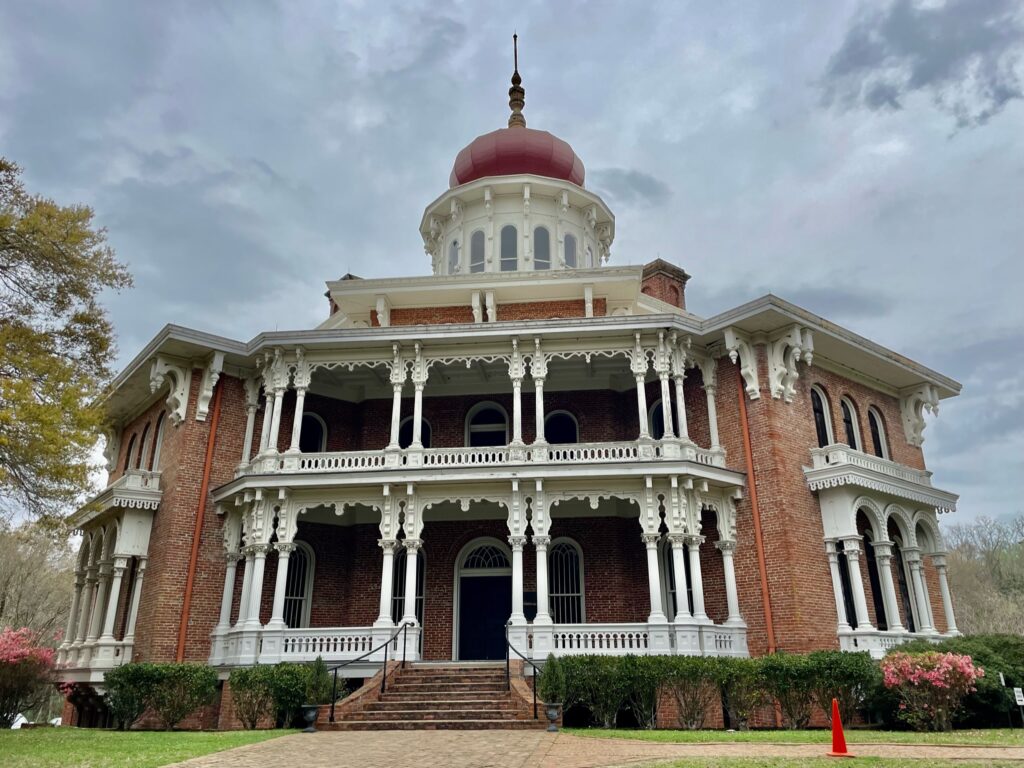
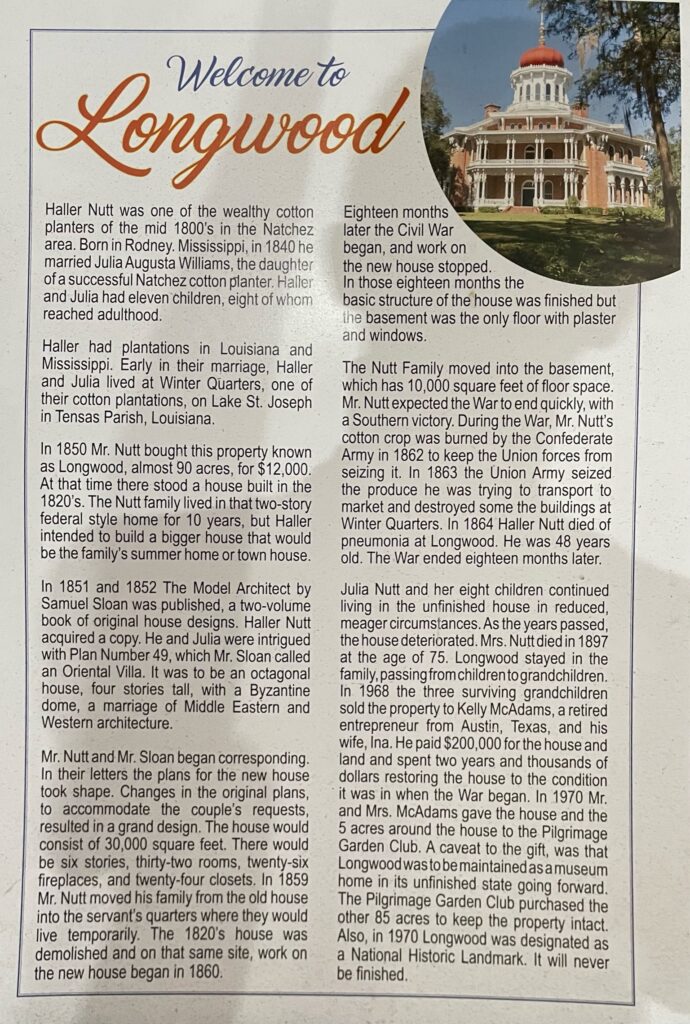
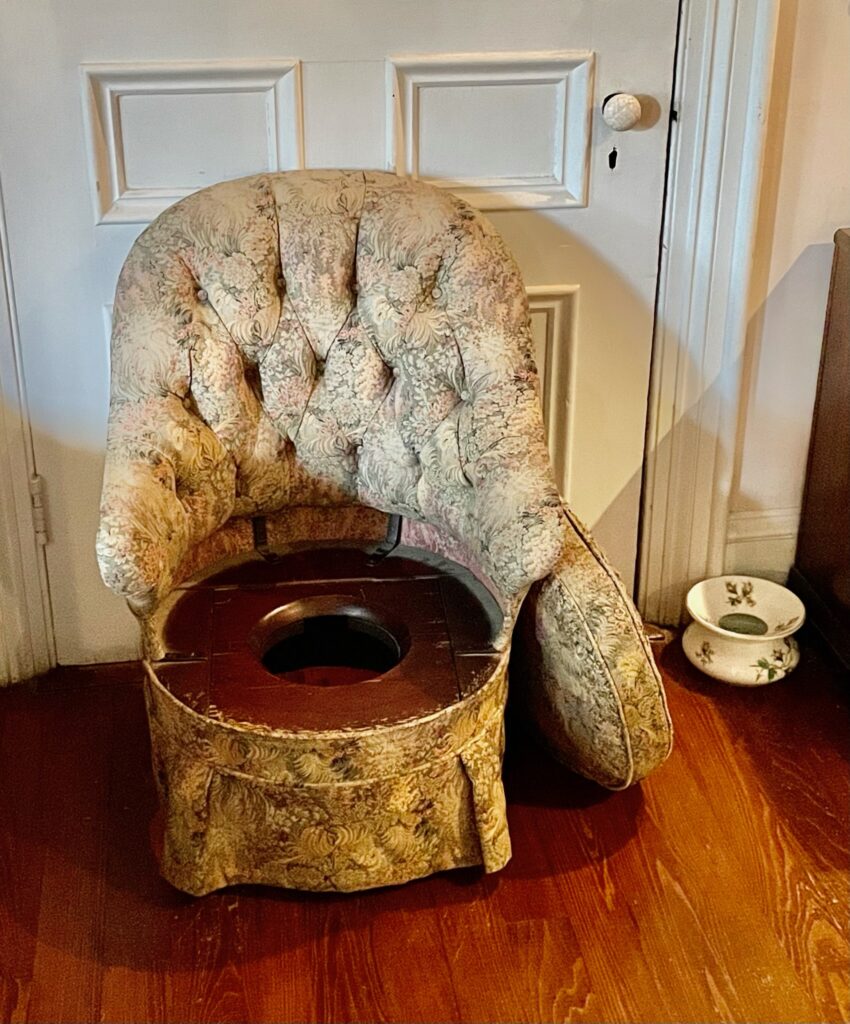
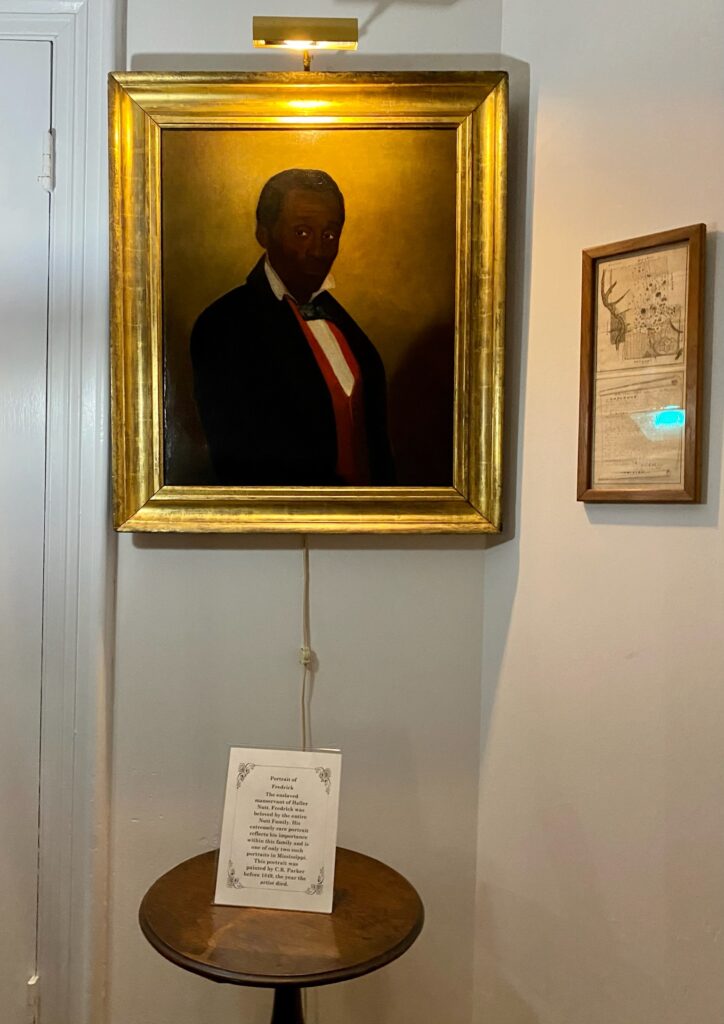
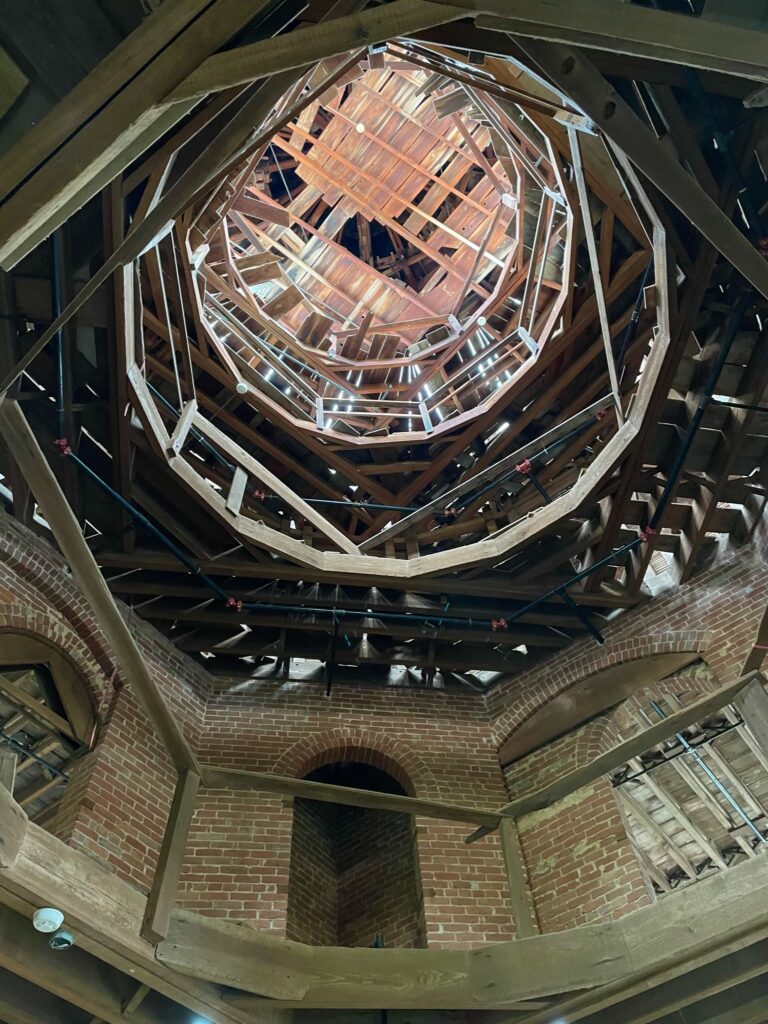
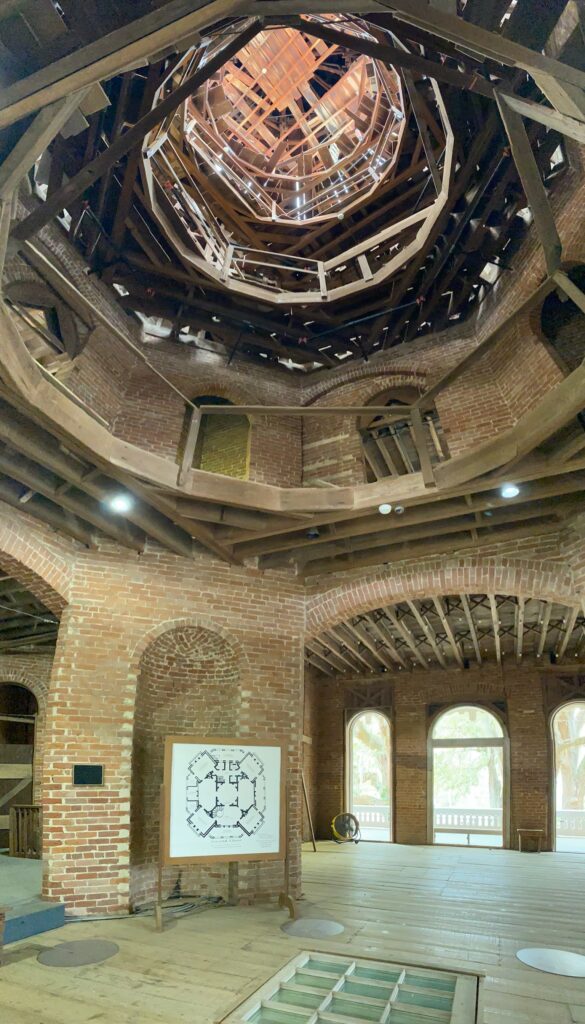
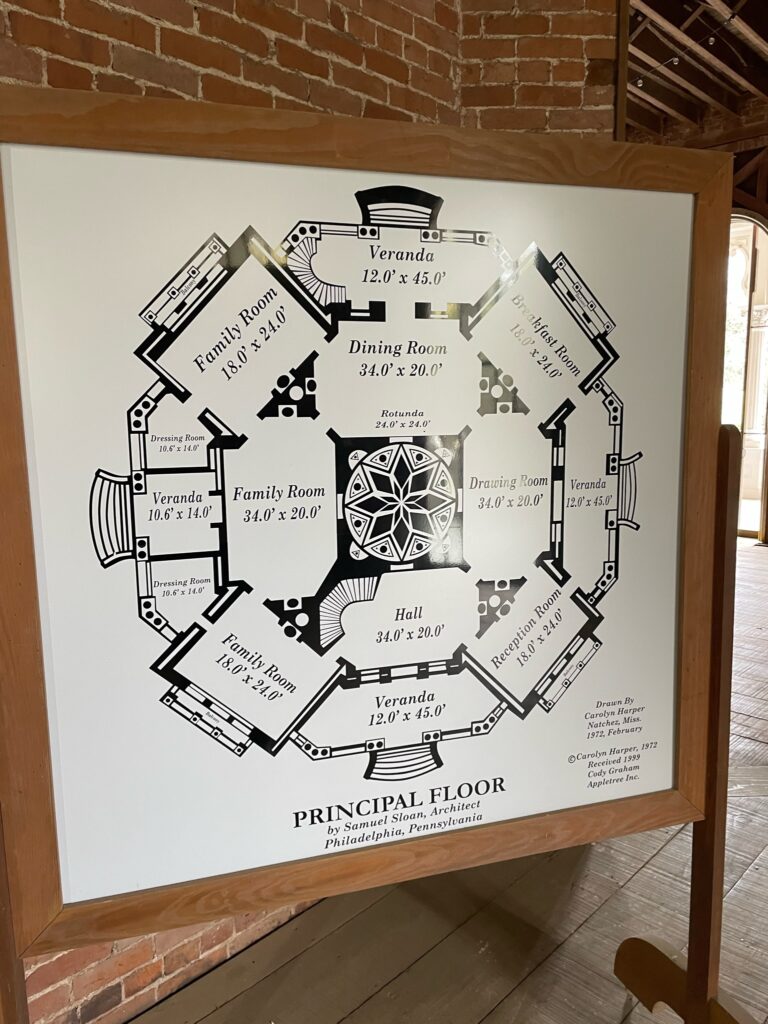
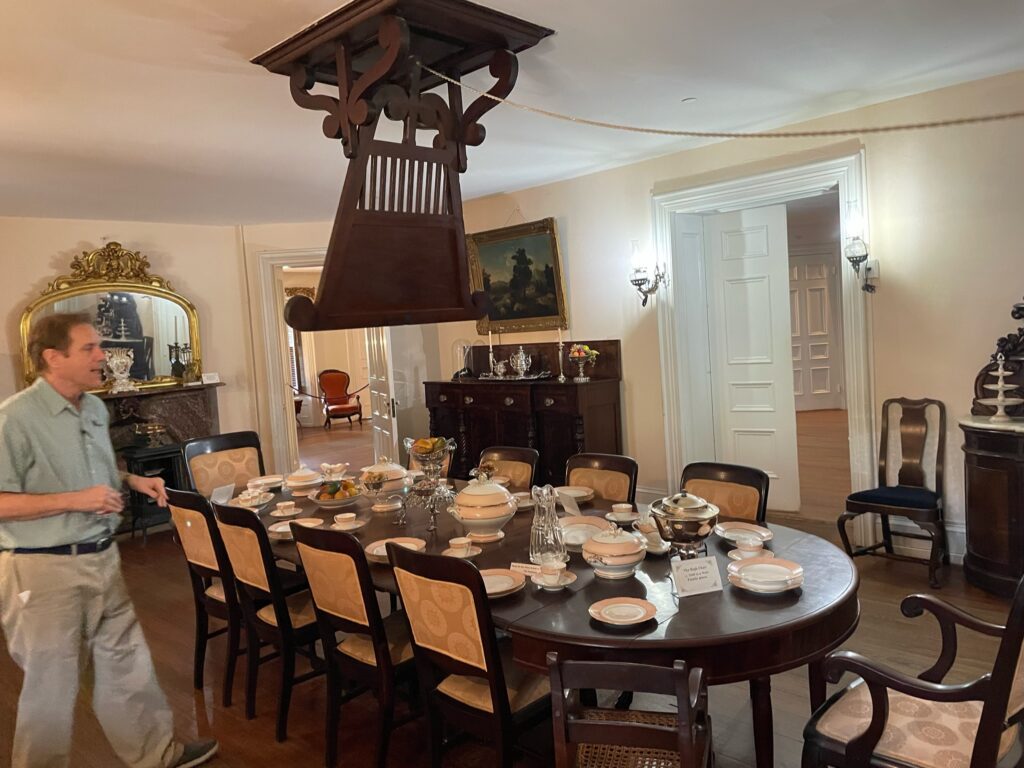
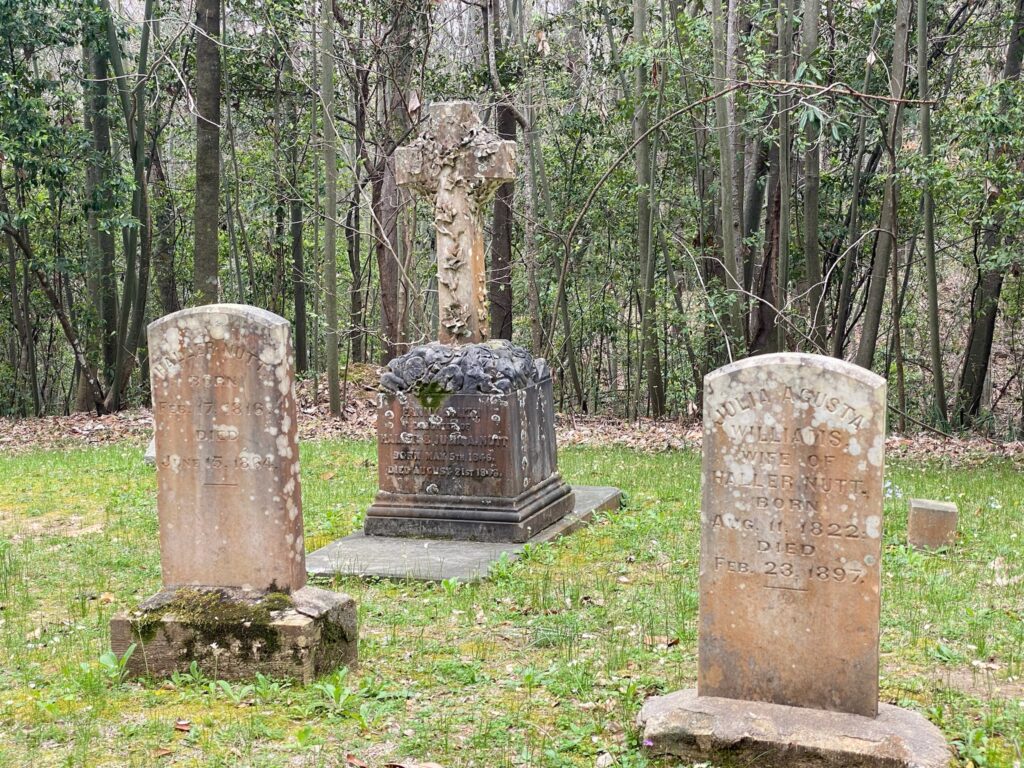
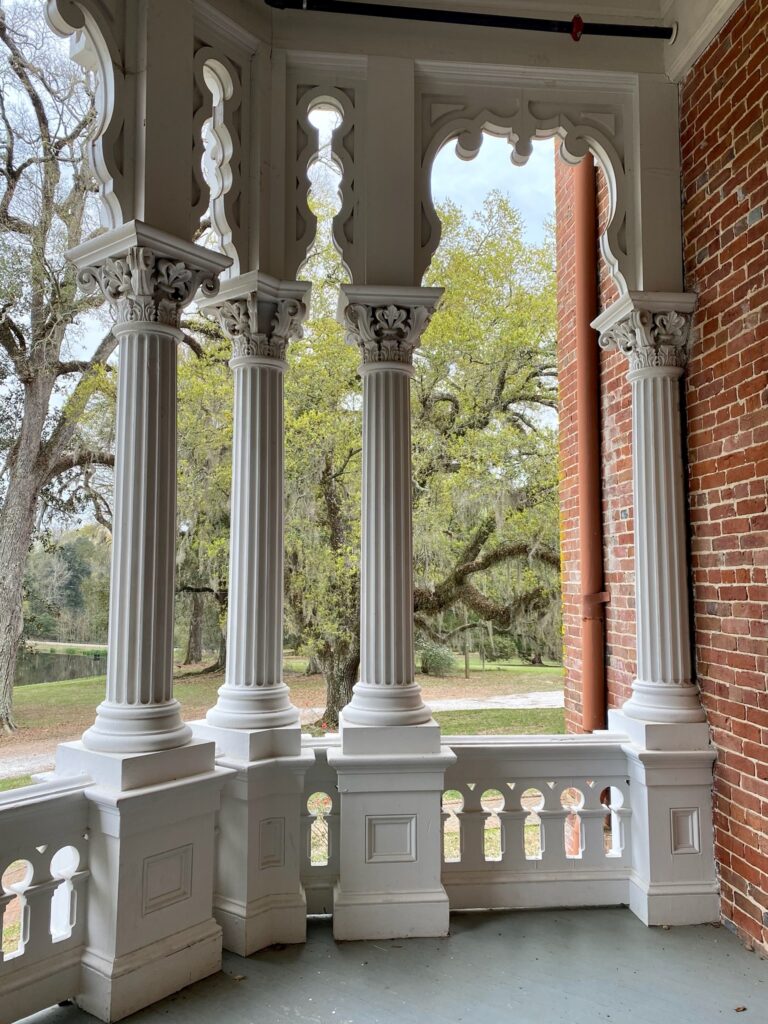
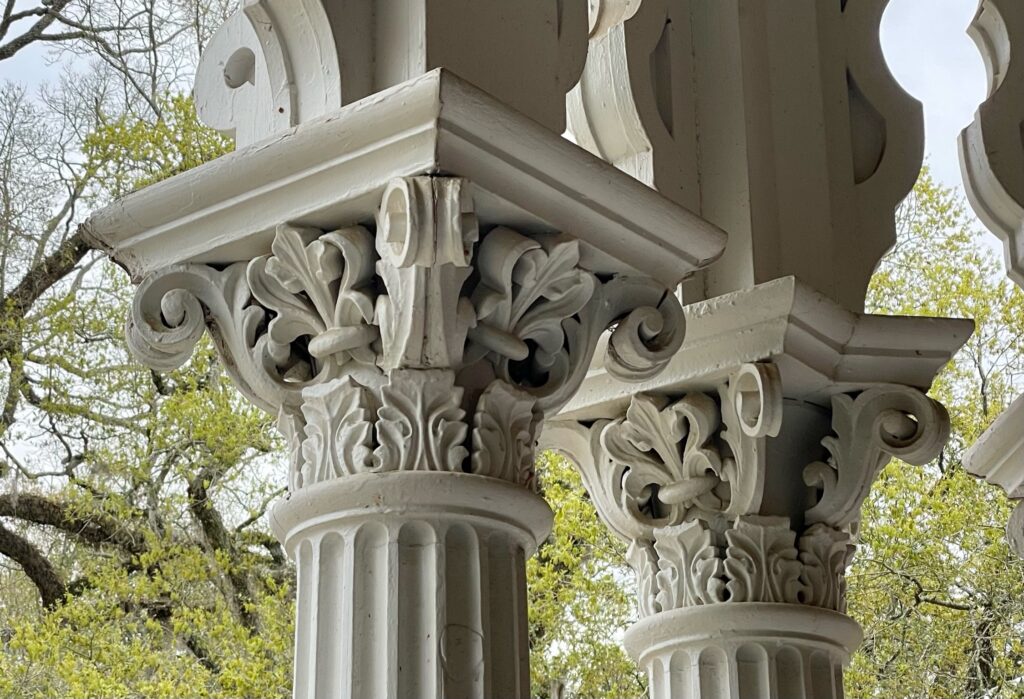
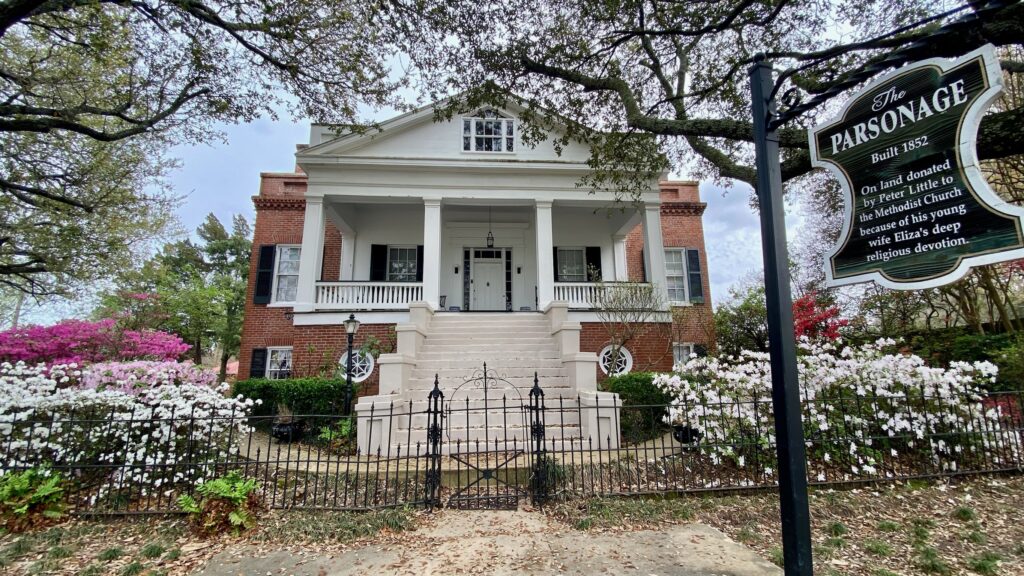




Most people I know love home shows and the extravagance of this and the other Natchez mansions. despite, or maybe because of, their antique furnishings and style, is no less interesting. The architectural features are often jaw-dropping, as are their landscaped gardens, but there’s no way to talk about the history of these Antebellum homes without acknowledging slavery and America’s ugly past instantly strips a lot of their sheen.
You may remember from last year’s post (linked here) that the Natchez Trace Parkway is a 444-mile highway that runs from Natchez MS, through the northwestern corner of Alabama, to its termination in Nashville TN. This road was first used by Native Americans – the Chickasaw, Choctaw, and Natchez natives.
Spanish explorers and French explorers used the trail, often clashing with the Native Americans. Later, boatmen known as “Kaintucks” used the Trace. “Kaintucks” sailed their goods and supplies down the Ohio and Mississippi Rivers all the way to Natchez MS and New Orleans LA to sell. They returned home on foot via the Natchez Trace Parkway. Mail carriers, merchants and settlers also used the trail. The Trace was designated a postal road in 1801 which improved the road and led to the development of many inns (called stands) and towns alongside. It wasn’t until steamboats made it possible to travel back north up the river that the Trace declined. By the start of the Civil War, most sections of the Trace had been abandoned, however, battles occurred near the Parkway where population centers had grown. It was all but forgotten until 1905 when the Mississippi chapter of the Daughters of the American Revolution announced they would commemorate the Parkway. WWI cut short their “pave the Trace” movement but in 1938 FDR authorized the creation of the Natchez Trace Parkway National Park but it was not completed until 2005.
During this year’s trip up part of the roadway we stopped at ancestral Emerald Mound and Windsor Ruins. More about both sites is provided in the pictures below.








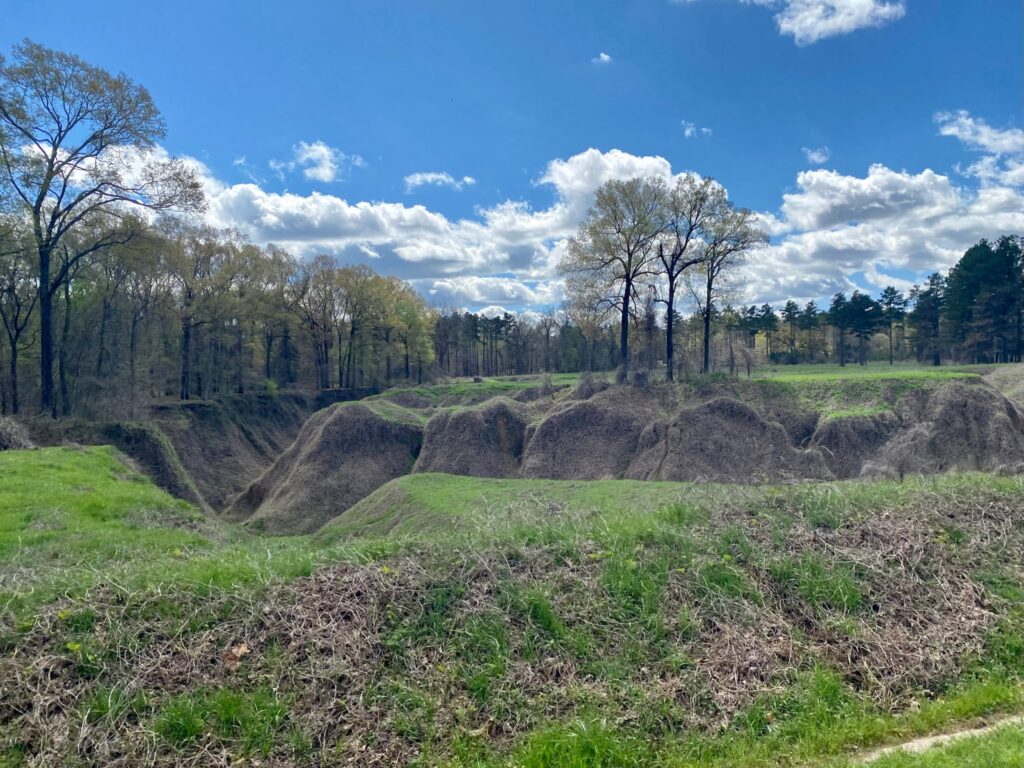
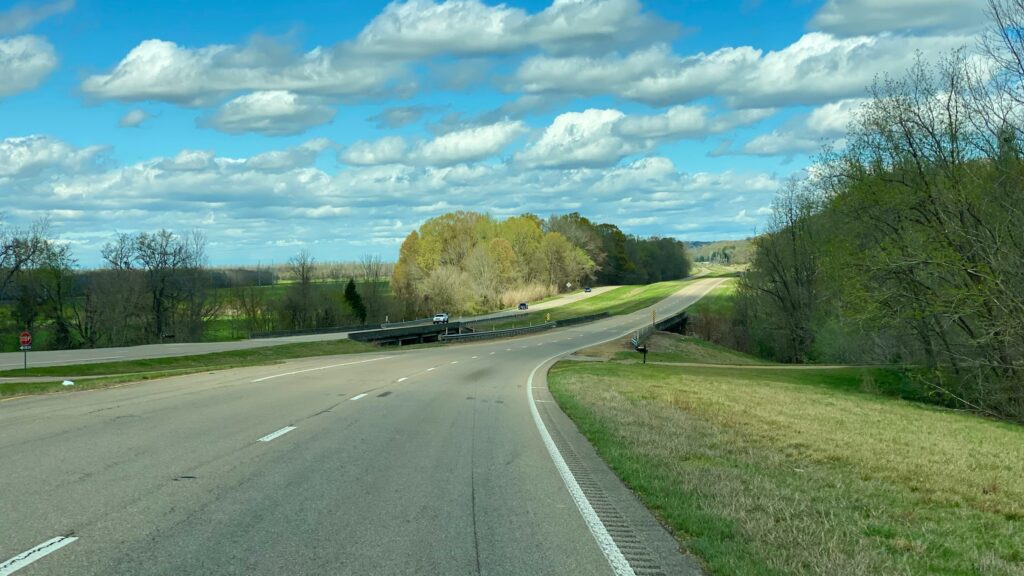
We left the Trace to travel through Port Gibson, some of which had seen better days.



Go to Natchez for the beautiful homes, their lovely gardens, the quaint waterfront town, and the Natchez Trace, but return with some important lessons in history.

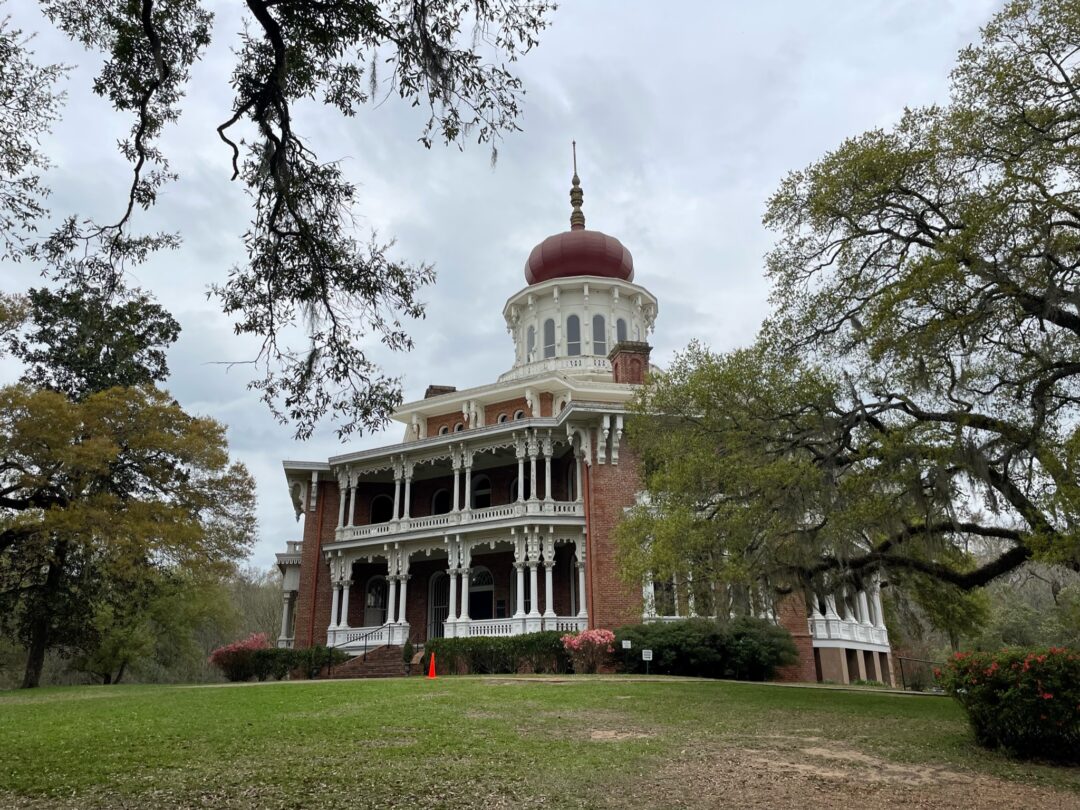
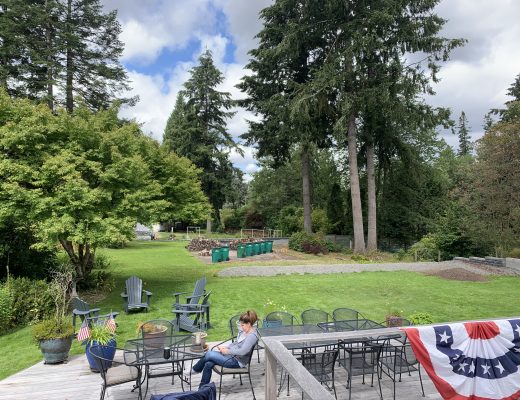
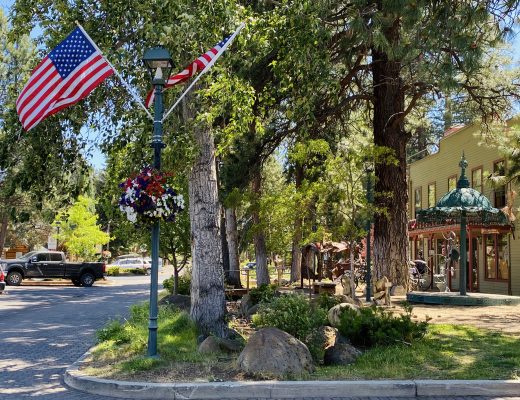









 Did you know that the oldest and largest aviati
Did you know that the oldest and largest aviati








 #camphairdontcar
#camphairdontcar


